About Monken Hadley Common

Monken Hadley Common (which is also known locally as Hadley Woods or simply as Hadley Common) was created by an Act of Parliament - the Enfield Chase Act 1777 - when most of the medieval hunting forest of Enfield Chase was enclosed (turned into fields), and an area at the western end was given to the villagers of Monken Hadley to compensate them for the loss of their right to graze horses and cattle on the Chase, by providing the village with grazing of its own. The Common has been a feature of life in the area ever since, and is the only remaining part of Enfield Chase which hasn't been enclosed.
After 245 years, on 28 April 2022 the Monken Hadley Common Act became law and on December 1st 2022 it came into force being the day appointed by the Churchwardens. It repealed those sections of the 1777 Act which related to the Common. The ownership of the Common was transferred from the Churchwardens of the Parish Church of Monken Hadley in the County of Middlesex to the Monken Hadley Common Trust (“the trust”) which is a charitable incorporated organisation registered by the Charity Commission on 31 May 2022 under number 1199156. For further information please refer to the page of this website relating to the trust and the management of the Common.
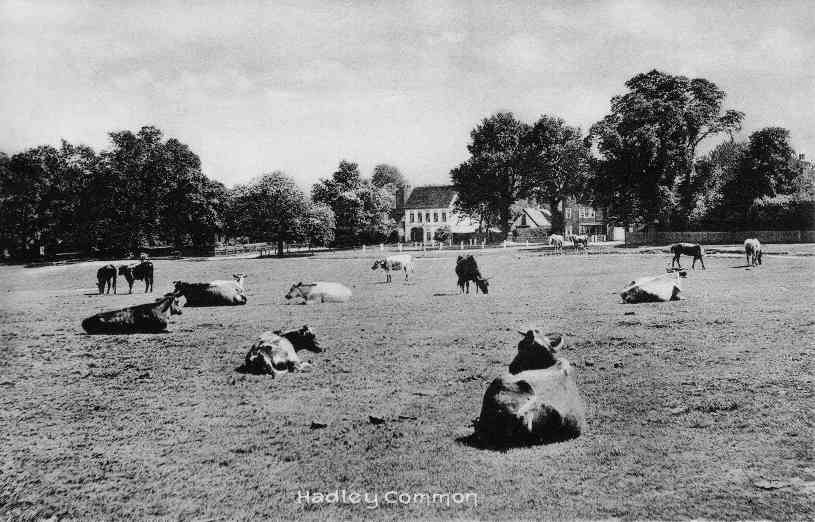
Horses and cattle on Monken Hadley Common about 1911, with Hurst Cottage in the background- Postcard, postmark 1911, unknown publisher
The grazing of horses and cattle on the Common continued for nearly 200 years after 1777 but, with the coming of the railway in 1850, the surrounding area began to be developed for housing - a trend which continues to this day - and it became more and more used for recreation. At the same time the importance of the grazing which it provided steadily diminished, to the point where, about 50 years ago, grazing ceased completely.
The Common has a considerable amenity and recreational value, especially to the communities which surround it; surprisingly, however, it is not supported by any regular local, regional or, indeed, national, aid (though it did received grants from English Heritage to match the money raised locally towards the cost of the refurbishment of the five gates). The Local Authority Grants which it received for forty years from both Barnet and Enfield were withdrawn in 1996, and this led directly to the formation of a charity, the Friends of Hadley Common, the following year.
Though the Common itself does have a small amount of income from things such as rents and wayleaves, this is nowhere near enough to cover the running costs, and it is therefore heavily dependent upon charitable donations. As a charity, the Trust is able to reclaim tax on Gift Aid donations, which significantly boosts the financial support for the Common.
The Common is maintained by the Conservation Volunteers on an entirely voluntary basis. The contribution of the many people who give their time, effort and devotion to running the Common simply would not work without the financial support for the unavoidable expenses involved in running 74 hectares of public open space - financial support that was consistently provided by the Friends from since its formation and which will be just as necessary if the Trust is to carry out its functions.
Since 1997 the Friends have raised more than £100,000 towards the maintenance and improvement of the Common, and we are always looking to recruit more people to contribute to its upkeep.
Hadley Common is not a privilege for the few but a very necessary source of "quiet recreation" for the many: walking, dog walking, bird watching, angling, playing cricket, flying kites, watching the rabbits and the birds (and if you are very lucky, the deer) - and just sitting quietly listening to the wind in the trees!
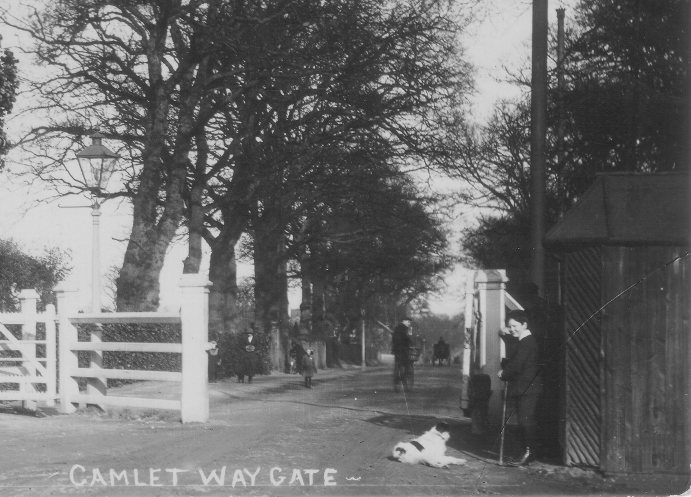
Camlet Way gate, about 1928. (In 1777 it was called "Camlot Way".) Notice the gatekeeper's hut on the right hand side (and the gatekeeper?). The Common has five gates, and their original purpose was to keep livestock from straying; they are now protected structures. - Postcard by Clarke's, East Finchley, N.2, postmark 1928
Monken Hadley Common is now the only remaining unenclosed fragment of the former Chase, and is situated north of High Barnet, and immediately to the east of ancient country village of Monken Hadley itself. In 1777 it was in the county of Middlesex; in 1889 it became part of Hertfordshire, and since 1965 it has been within the administrative area of the London Borough of Barnet.
The Common is a roughly wedged shaped tract of land of which about 74 ha are accessible to the public; it’s about 2.5 kilometres long, tapering from a width of about 0.5 kilometre at its broadest point, close to the white gates beside St Mary's Church, Monken Hadley at the western end to a narrow point by one of the other sets of white gates at Games Road at the eastern end - about 300m from the Cockfosters Road entrance to Trent Park. It is bounded to the north and south by the residential areas of Hadley Wood and New Barnet respectively.
A public bridleway crosses the Common, joining the end of Games Road, at the east, to the car park at the foot of Baker's Hill at the west. Horse riding and pedal-cycling are permitted along it - although not elsewhere on the Common. The bridleway forms part of the London LOOP - the London Outer Orbital Path (the walker's M25), and links with the Pymmes Brook Trail near Jack's Lake.
A rural enclave
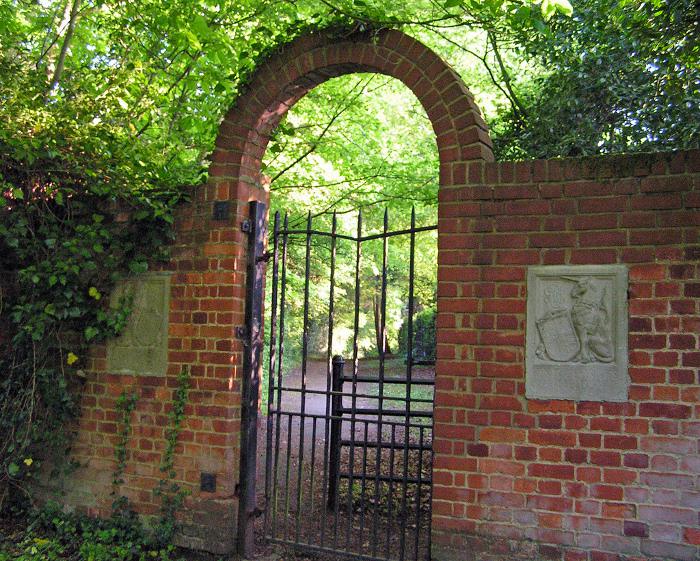
The entrance to King George's Fields from the Common, with its two heraldic panels to a design by the artist George Kruger Gray - Photo by John Vincent Keogh
The Common has a rural aspect, which is enhanced by having Hadley Wood Golf Club and the Covert Way Local Nature Reserve (both in the London Borough of Enfield) to the north, and King George's Fields, the Tudor Sports Ground nine hole foot golf course, and the playing fields of two schools (all in the London Borough of Barnet) to the south.
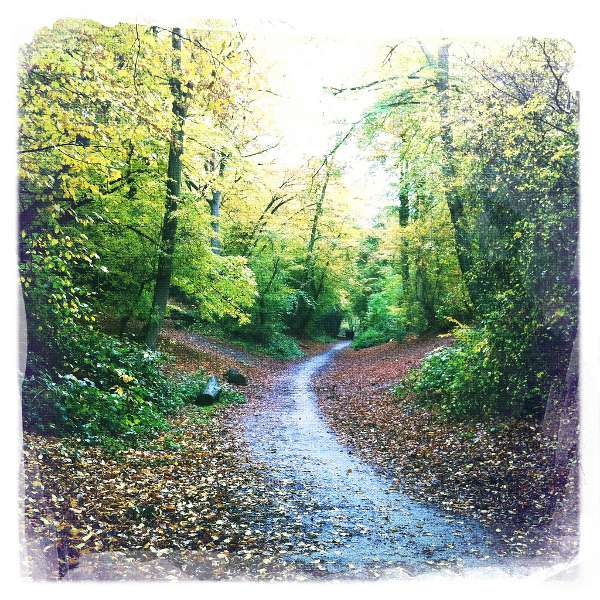
The bridleway east of the railway bridge - Photo by John Vincent Keogh
Approximately 53 ha of the Common are mixed semi-natural deciduous woodland with some open glades and the remainder is open grassland with planted or selected trees.
The Common lies within the Monken Hadley Conservation Area, and is listed as a “Site of Borough Importance for Nature Conservation (Grade 1)” by the London Borough of Barnet. It and its trees are designated as being of general amenity value, and the woodland west of the railway line is subject to a Tree Preservation Order.
A haven for wildlife
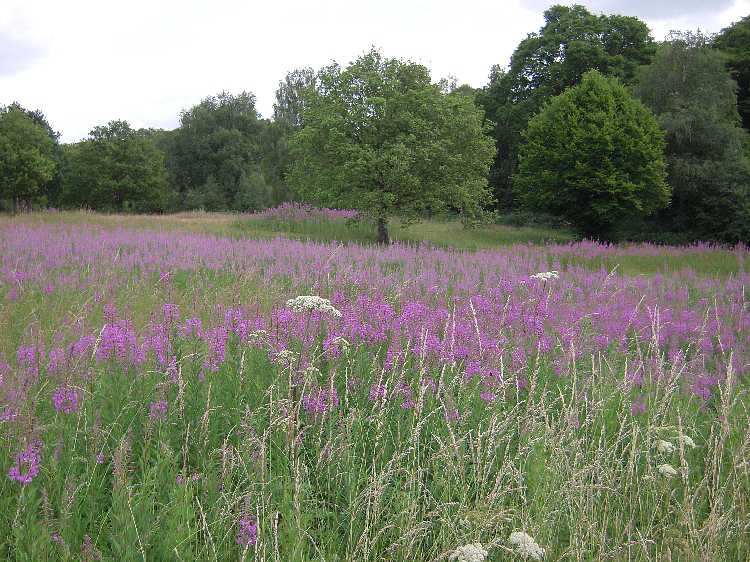
A profusion of rosebay willow on the upper Common - Photo by Alan Magnus
The Common is not a nature reserve but it, and the adjacent Covert Way Local Nature Reserve and the open land belonging to Hadley Wood Golf Club, are havens for wildlife. Its importance in this respect is increased by its location on the urban fringe, where pressures on wildlife are considerable.
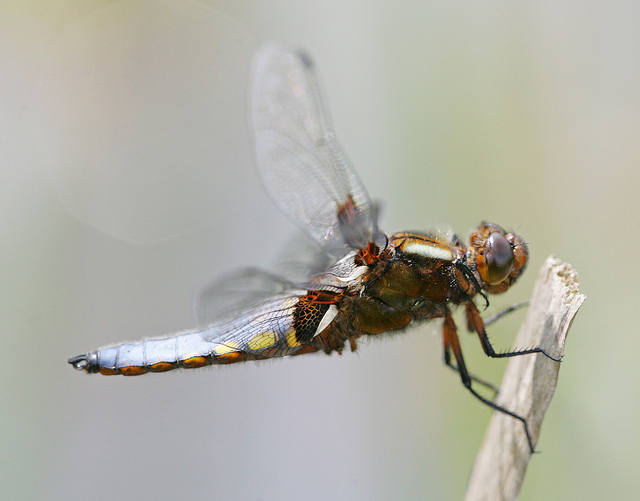
Broad-bodied Chaser dragonfly over the pond opposite "Gladsmuir", Monken Hadley Common, May 6th, 2011 - Photo by Simon West
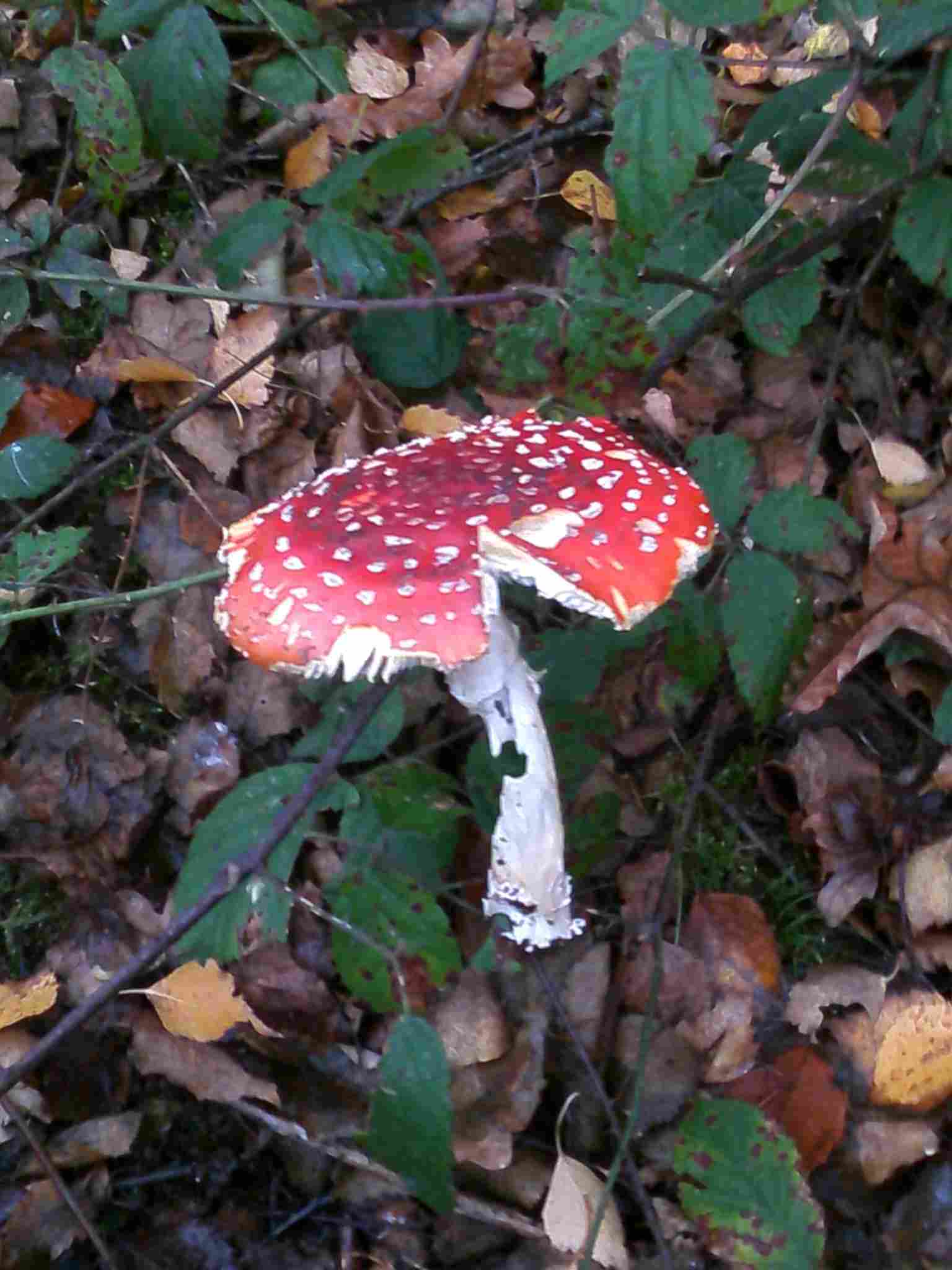
Fly Agaric growing on poor soil under birch at the western end of the Common, November 2012 - Photo by Les Bedford
In 1992 Margaret Melling completed a 'desk study' of the wildlife, which is a collation of existing records, listing 12 species of mammals, 83 birds, 20 butterflies and some hundreds of other species of fauna as well as a great many trees, wild flowers, fungi etc. which have been associated with the Common. (Unfortunately this desk study can’t be traced, and the Curators would be very grateful to hear from anyone who has a copy.)
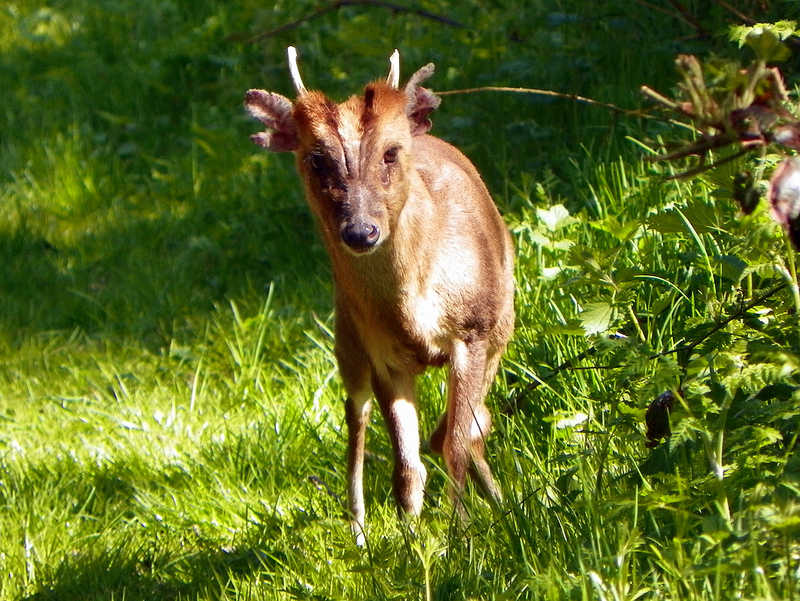
Muntjac deer - Photo by Peter O'Connor (Photo taken 3 May 2013, St Nicholas Park, Stevenage)
Green and/or greater spotted woodpeckers will probably be heard if not seen. If you are very lucky, you may also see the shy and elusive muntjac deer. Butterflies, including the white-letter and purple hair-streaks, may be observed, and in the late evening Daubenton's bats may be seen skimming low over Jack's Lake. There were numerous sightings of the harmless grass snake in the summers of 1996 and 1997. Many wild flowers and fungi add to one's enjoyment.
Recreation and relaxation
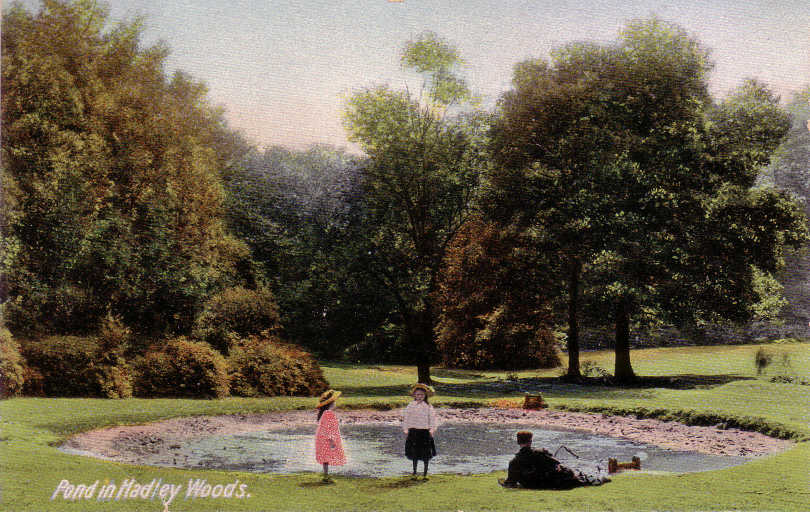
Pond in Hadley Woods" - Postcard c.1906 by Blum & Degan "Kromo" series No: T 21914, unposted
Monken Hadley Common was created in 1777 to provide pasture for the animals owned by the inhabitants of the village of Monken Hadley. After the coming of the railway in 1850 the land to the south began to be developed for housing, which resulted in a steady reduction in the demand for pasture, and also an increased demand for recreation, not only from those living in the new houses in the immediate vicinity but also from people travelling to the Common by bicycle, rail and tram from further afield.
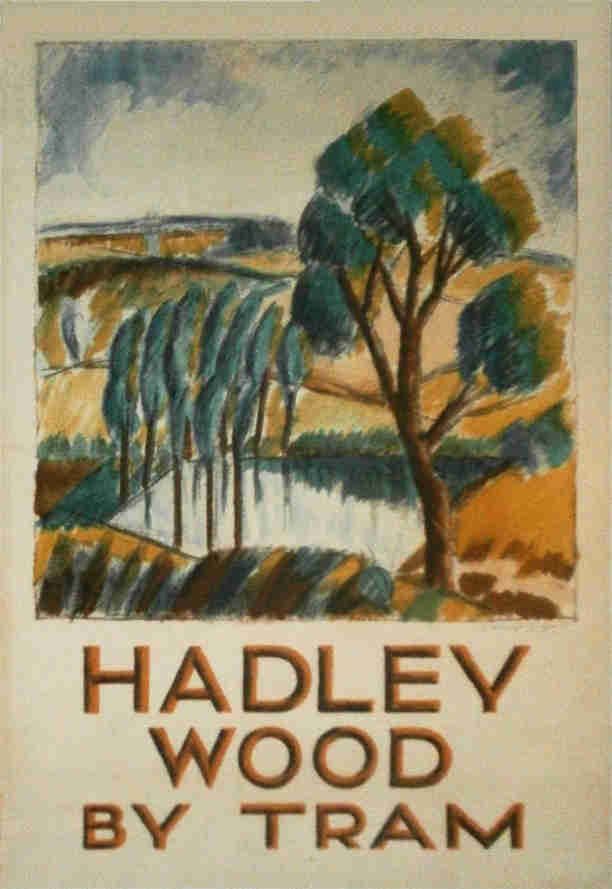
Poster of 1924 by Edward McKnight Kauffer. Trams ran from North Finchley between 1907 & 1938 (but only as far as High Barnet Church) - Reproduced by kind permission of Barnet Museum
By the beginning of the 20th century use of the Common for recreation was in full swing, and a significant number of postcards featuring pictures of it were evidently produced and sold (these regularly come up for sale on the Internet). The earliest known ones - by Blum & Degan - date from about 1906
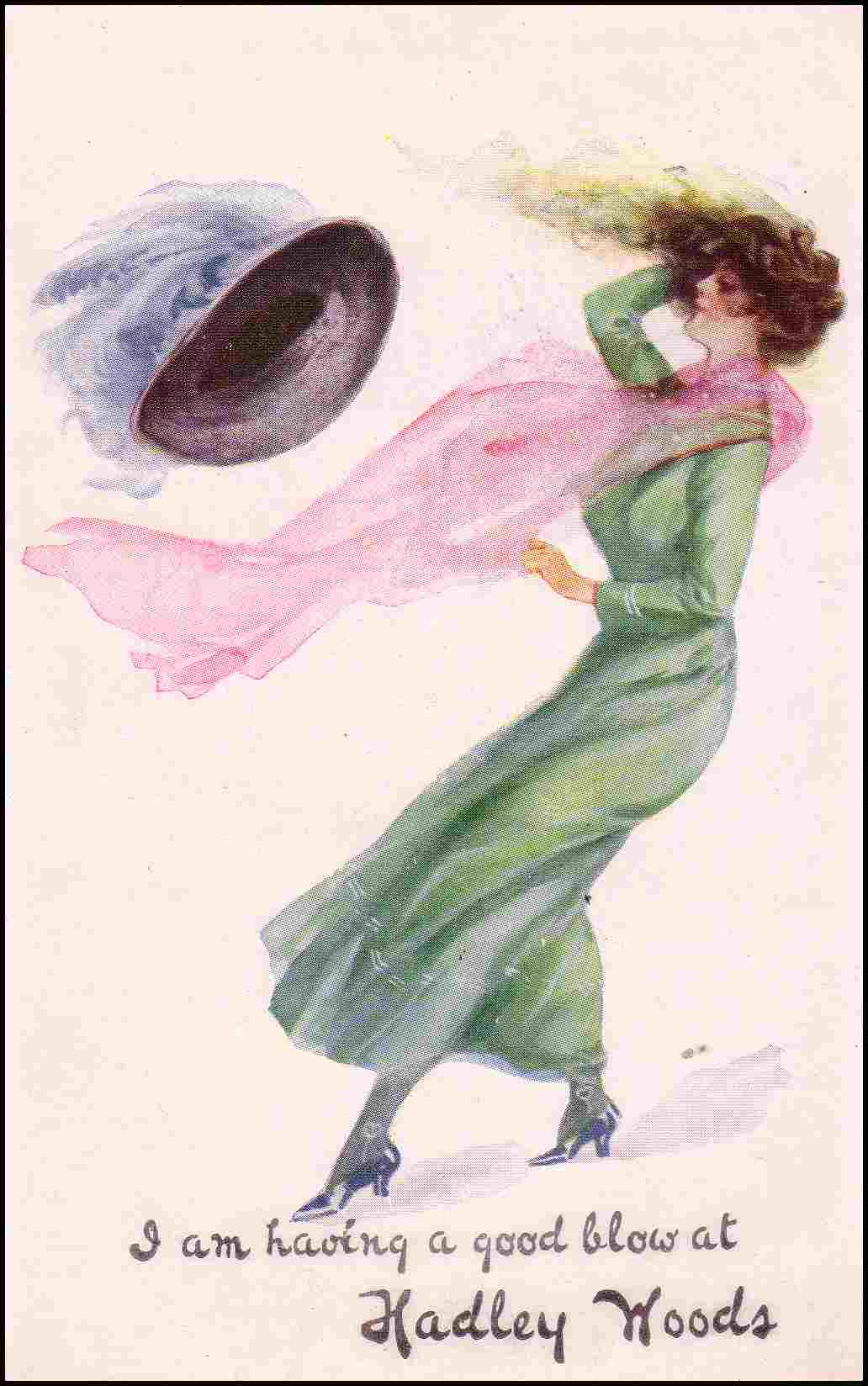
Wildt & Kray postcard - Wildt & Kray, London, E.C. Series No. 2800, unposted
The Common's attraction as a place of recreation and relaxation was also boosted by the funfair and tea rooms run by the Frusher family at Folly Farm (on the right, between the railway bridge and Jack's Lake, on the site of what is now JCoSS) and by the boating on Jack's Lake, run by East Barnet Urban District Council.
Its heyday as a visitor attraction seems to have been in the decade following the 2nd World War: in 1953 it was recorded that “over a recent Whitsun Bank Holiday no fewer than 40,000 people visited Hadley Woods”(!).
By the mid 1960's grazing had completely ceased, boating had been discontinued, and in 1969 Folly Farm was sold to East Barnet Urban District Council, which developed the site for use as a school. But well before then, the area round Jack's Lake had become a meeting place for teddy boys - and, as the verse went at the time:
If you go down to Hadley Woods today, you'd better go in disguise,
In drainpipe trews and fancy shoes and something intense in ties.
Don't bother to wash - it's sure to rain;
Remember your cosh and bicycle chain;
Today's the day the Teddy boys have their picnic.
The Common had hit a low point ............
A new beginning: In 1981 a new constitution was adopted for the management of the Common, and thanks to the hard work put in by successive Curators, Conservation Volunteers and members of the Management Committee, and to the generous financial support afforded by the Friends of Hadley Common, the Common went through something of a renaissance.
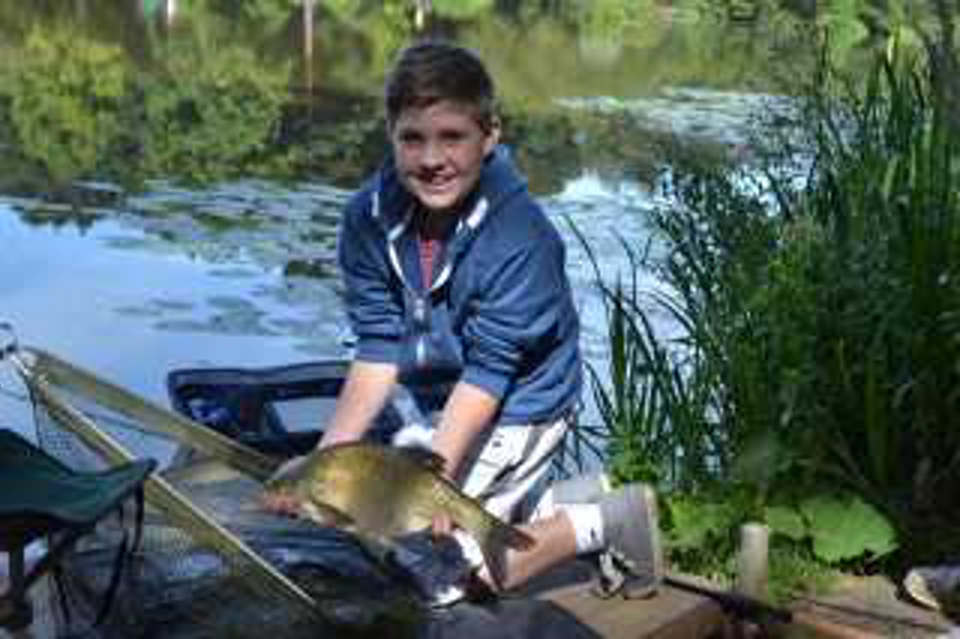
Young fisherman at Jack's Lake - Photo by kind permission of Hadley Angling and Preservation Society
A year later, in 1982, the fishing of Jack's Lake was licensed to the newly-formed Hadley Angling and Preservation Society (HAPS), which also did a lot to improve the parts of the Common round the lake, as well as the fishing and the lake itself. The fishery, which is still managed by HAPS, is open to all, with 27 of the 44 pegs being fishable on day tickets. HAPS organises Junior Angling Competitions - open to anyone aged 16 or under - and continues to do a first-class job in maintaining both the fishery and its environment.
Though the days of mass visitors, which were seen 70 years ago, are clearly over, the Common is still a highly-valued resource for walkers, dog walkers, bird watchers, botanists, joggers, cricket lovers, anglers, families picnicking and playing games, pedal-cyclists enjoying the safe cycling along the bridleway, and people just spending some quiet time in the countryside. The Common is also coming to be more appreciated again by people living further afield, not least by people walking the Pymmes Brook Trail, which starts on the Common, and by those following the London LOOP, which crosses it.
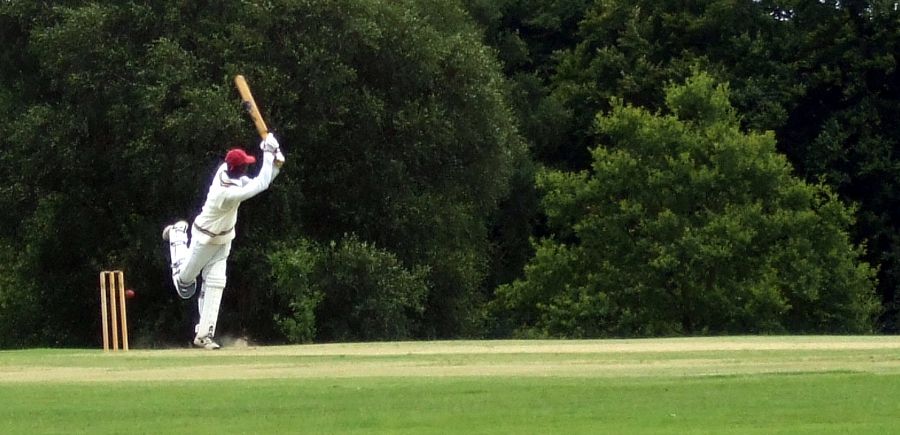
Monken Hadley CC vs. Botany Bay CC 2nd XI, July 28, 2007 - Photo by James Cridland
Cricket: The present Monken Hadley Cricket Club, which has its pitch on the grassland at the western end of the Common, was formed in 1954, and has performed continuously since then.
The earliest known record of a match being played on the Common appeared in the Barnet Press, and relates to a game against the Privy Council Office C.C on June 14th 1862 . There's also a reference in an Anthony Trollope novel “The Bertrams”, which, though written in 1858/59, was set in the 1840's; it therefore seems very likely that cricket was first played on the Common before 1862. (Anthony's mother, Fanny - who was also an author - lived for a time in Hadley.)
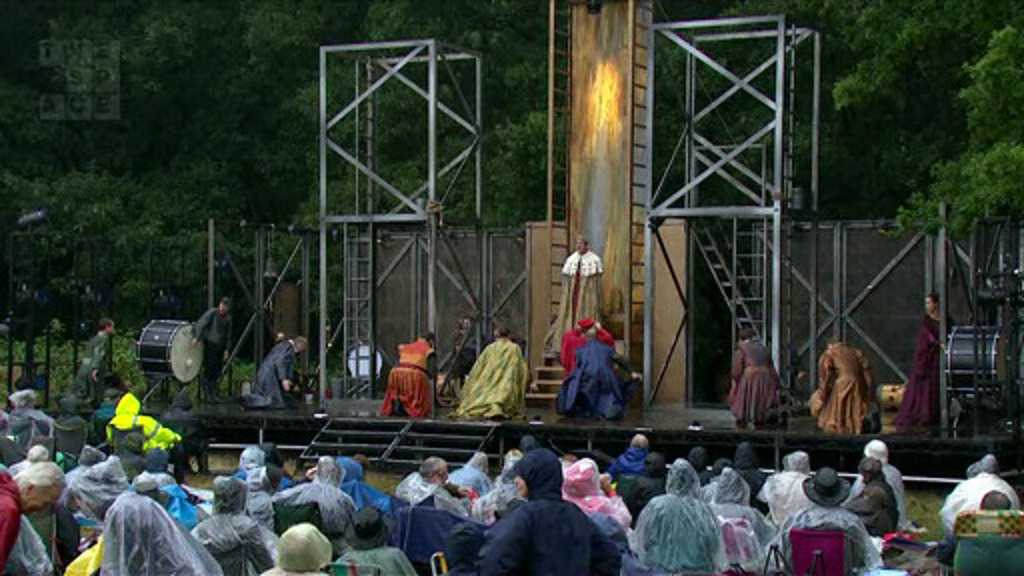
Scene from Henry VI, Part 2 - The Houses of York and Lancaster, Monken Hadley Common, August 24th, 2013 (Snapshot taken from a recording of a performance by The Space, and published with their kind permission)
Shakespeare's Henry VI: In the summer of 2013, Monken Hadley Common hosted Shakespeare's Globe's fourth and final open-air "battlefield performance" of the Henry VI trilogy, directed by Nick Bagnall, and the event was greatly appreciated by those hardy souls who managed to brave the continuous rain.
All three plays were streamed live on the Internet, thanks to The Space (which was then funded by the Arts Council England and the BBC), though unfortunately the awful weather conditions, and a power outage during Part III, mitigated against the technology, and the live stream was subject to frequent interruptions
Ownership and management
The Common is owned and managed by the Monken Hadley Common Trust, which is a Charitable Incorporated Organisation registered by the Charity Commission on 31 May 2022 under number 119 9156. It became the owner on 2022 which was the day appointed by the Churchwardens pursuant to section 13 of the 2022 Act. All the other assets and liabilities of the Churchwardens in their role as a statutory corporation under the 1777 Act were also transferred to the Trust.
A fundamental objective of the legal changes is to preserve the Common from development. The primary objects of the Trust under section 3 of the 2022 Act and its constitution are (a) the preservation of the Common as a place for peaceful open air public recreation and enjoyment; and (b) the conservation, protection and improvement of the physical and natural environment of the Common for the benefit of the public, having regard to the requirements of good forestry and the desirability of conserving flora and fauna.
The constitution of the Trust is attached and it is a membership charity open to all on payment of an annual fee. It has six trustees, who constitute the Board, and there are provisions for the retirement and appointment of trustees by the members. Annual returns will be made to the Charity Commission and it is subject to all the legal provisions relating to charities. [section on becoming a member]. Once a year, usually in September, the members of the Trust hold their AGM at which they receive the accounts & the curators' report & elect officers & new trustees.
The Trust has power to make regulations to govern the use of the Common and these must be approved by the Secretary of State under section 11 of the 2022 Act [set out present situation re approval]. These regulations make provision that a person contravening the regulations is liable on summary conviction to payment of a fine so they must be observed. Commercial activities, including commercial dog walking, will require the written permission of the Trust. Careful thought has been given to these regulations with the objective that the Common is preserved and used for the benefit of the public in accordance with its objects.
The Trust appoints officers to undertake the management. The Curators are responsible for the day-to-day supervision and control, producing a management plan every five years. They supervise the group of volunteers who substantially undertake the maintenance of the Common [see below]
The Secretary looks after legal and secretarial matters such as taking minutes of meetings, dealing with correspondence, fixing meetings and issues such as encroachments and unlawful disposal of waste on the Common. The Treasurer is responsible for financial matters and the Membership Secretary, in conjunction with the Secretary, is responsible for dealing with applications for membership, publicity and related matters.
Volunteers section
There is a substantial group of volunteers who undertake all manner of tasks necessary for the maintenance of the Common., including the removal of litter, partial control of brambles, clearing the stream and dealing with fallen trees or branches. They normally meet on Tuesday or Thursday morning each week and the only requirements for joining are a reasonable level of physical fitness and enthusiasm. Major tasks beyond the expertise of the volunteers, including the felling of trees and the cutting of the grassland, are undertaken by paid contractors. Anybody interested in joining the group should contact the Curators whose details are attached.
Do come and enjoy the Common!
All we ask is that, for the benefit of all the other visitors, you respect the following RULES:
- No fires
- No vehicles or motor-bikes (except on roads)
- No horse riding or cycling (except on roads or on the bridleway)
- No dumping or litter
- No grazing (except by commoners)
- No camping
- No shooting
- No damage to or removal of trees, plants, turf, timber or wildlife
- Dogs should be kept under effective control at all times
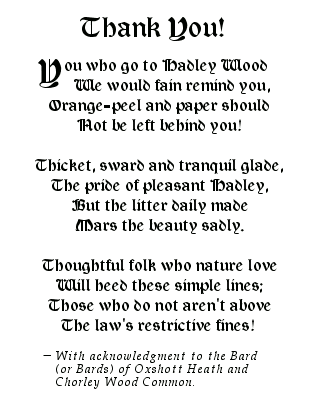
Taken from "Twenty-Six Miles of RAMBLES FROM COCKFOSTERS" (Published by London Underground Transport, 1934)
NOTICE OF ANNUAL GENERAL MEETING
of the Members on Monday 28th October 2024 at 7.30pm at Old Fold Manor Golf Club, Old Fold Lane, Hadley Green, Barnet EN5 4QN.
AGENDA
- Election of chair of the meeting
- Apologies for Absence
- Minutes of last AGM to be approved
- Matters arising
- Retirement and election of trustees for decision*
- (a) Trustees’ Annual Report for the period 1-4-23 to 31-3-24
(b) Receipts & payments accounts 1-4-23 to 31-3-24 to be received - Curators’ Report
- Secretary’s Report for information**
- Any other business**
* Andrew Peter Walker and William Boyes are retiring by rotation in accordance with the Constitution as they have served longest in office but offer themselves for re-election. Linden Reilly, a long-term volunteer, and Leonora Petrou, who joined the volunteers more recently, wish to stand for election. The members are asked to vote to elect Andrew Peter Walker, William Boyes, Linden Reilly & Leonora Petrou.
** reports to follow
Please find attached items 3, 6(a) & 6(b) as above.
Gary Chambers
Secretary to the Trustees
September 2023
N.B. You may appoint a proxy to attend & vote for you. Please refer to clause 11(7) of the Constitution which is on the web-site www.mhctrust.org.uk. Proxy notices must be given to the Secretary by post to 23, Tudor Rd, Barnet EN5 5NW or by email to secretary@mhctrust.org.uk. by 12 noon on 16-10-24.
Vacancies corner
- Woodlands volunteer - we are looking for someone with expertise on woodlands in general to join either as a volunteer or, possibly, as a trustee. Please contact treasurer@mhctrust.org.uk for more details.